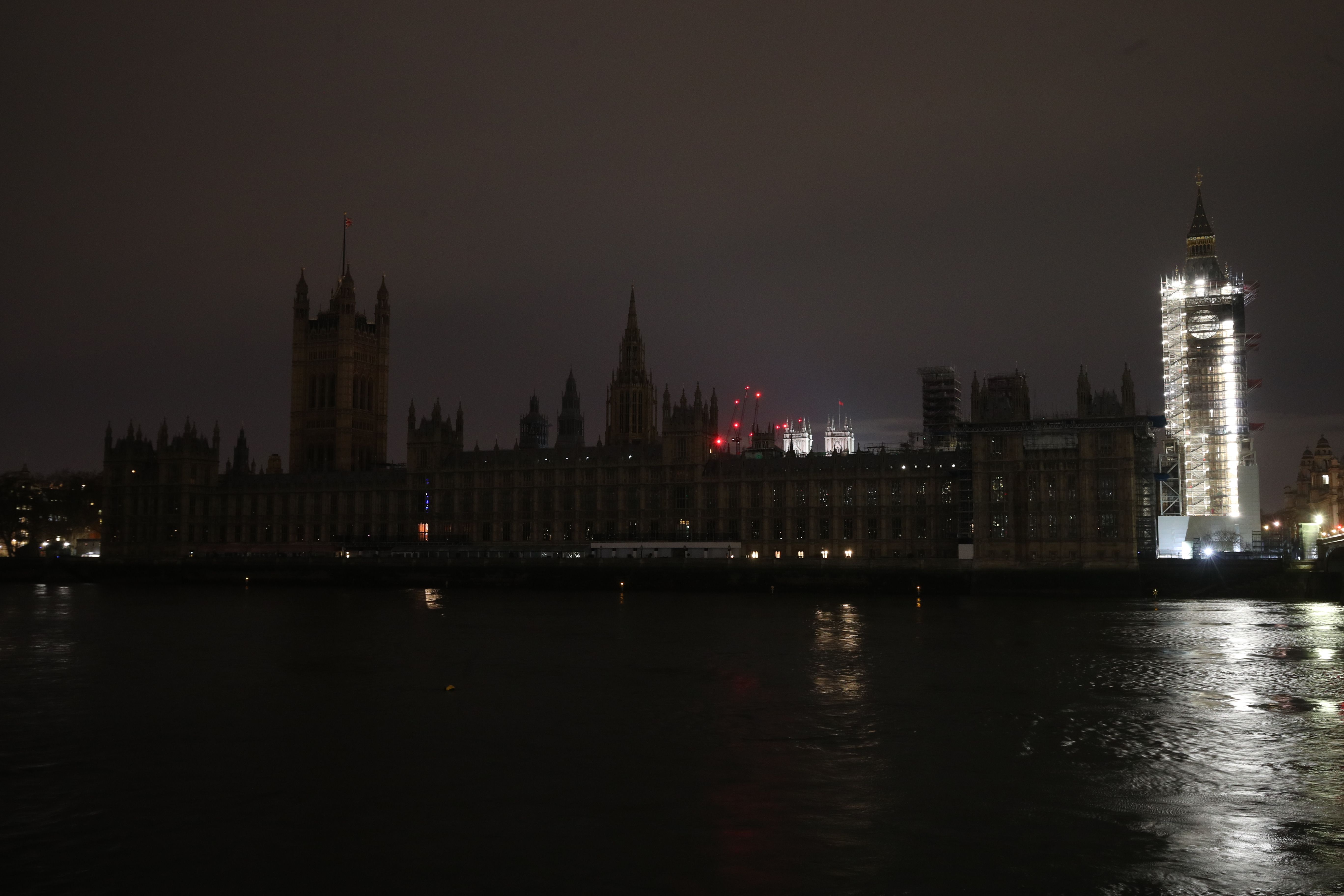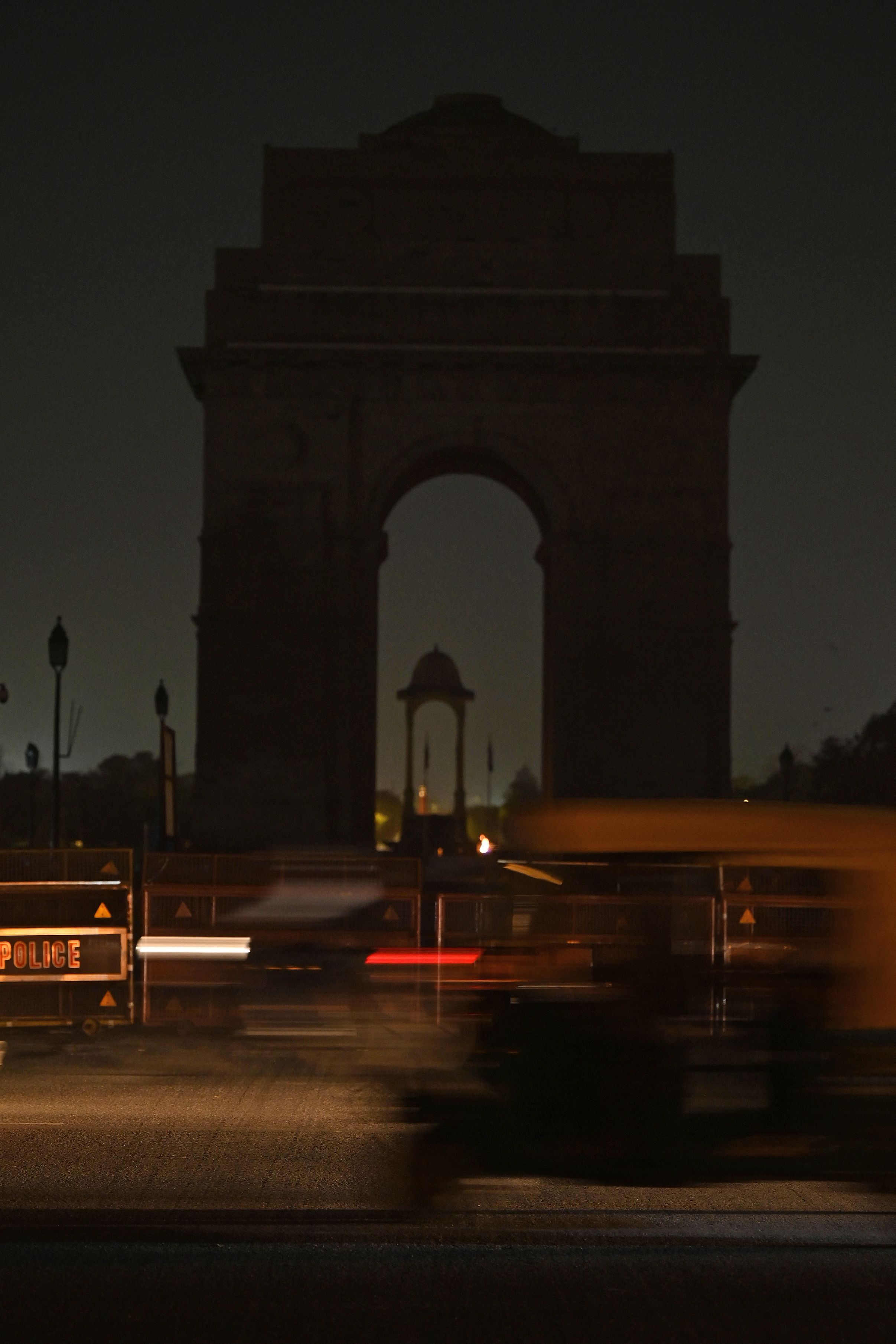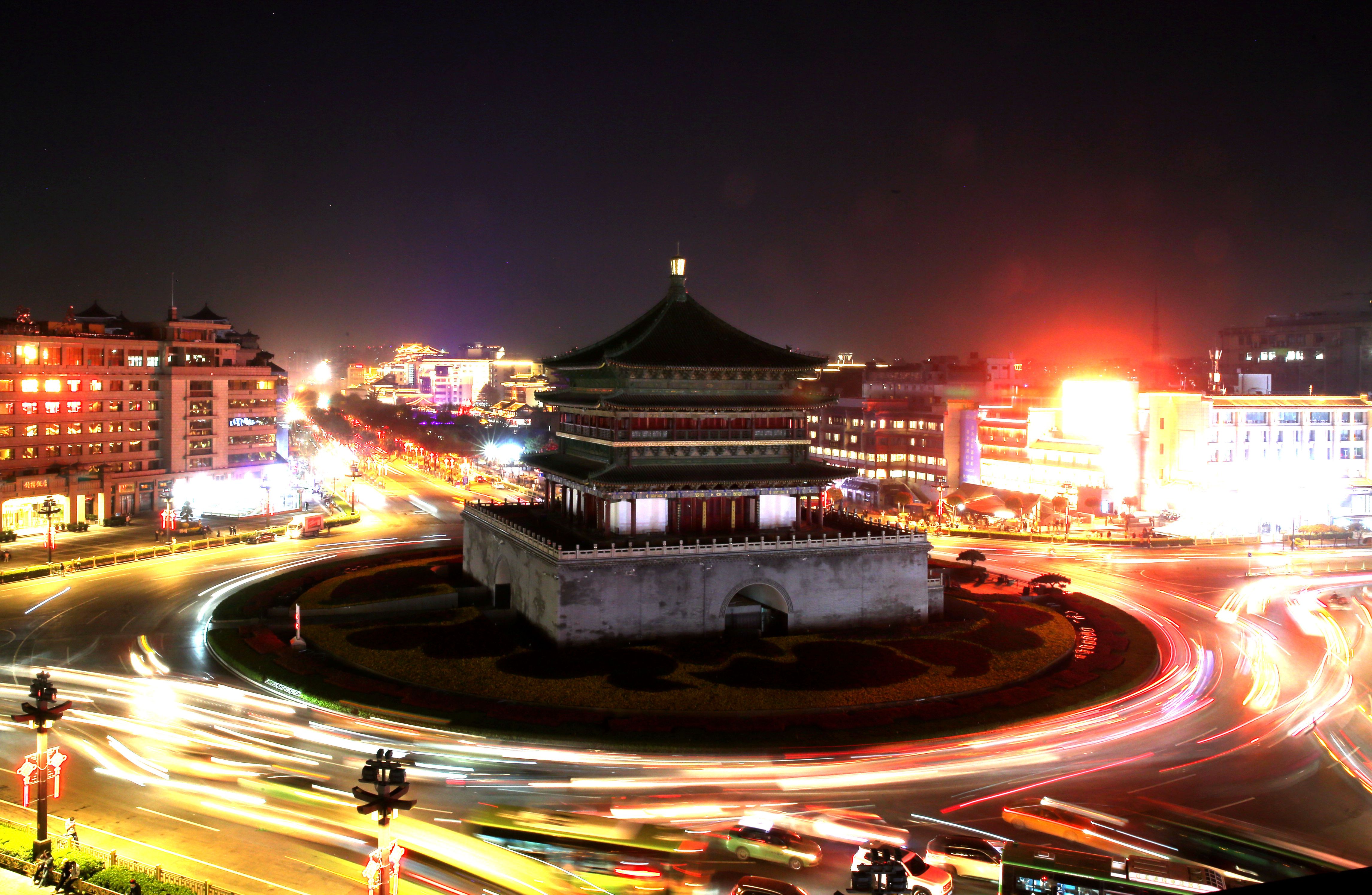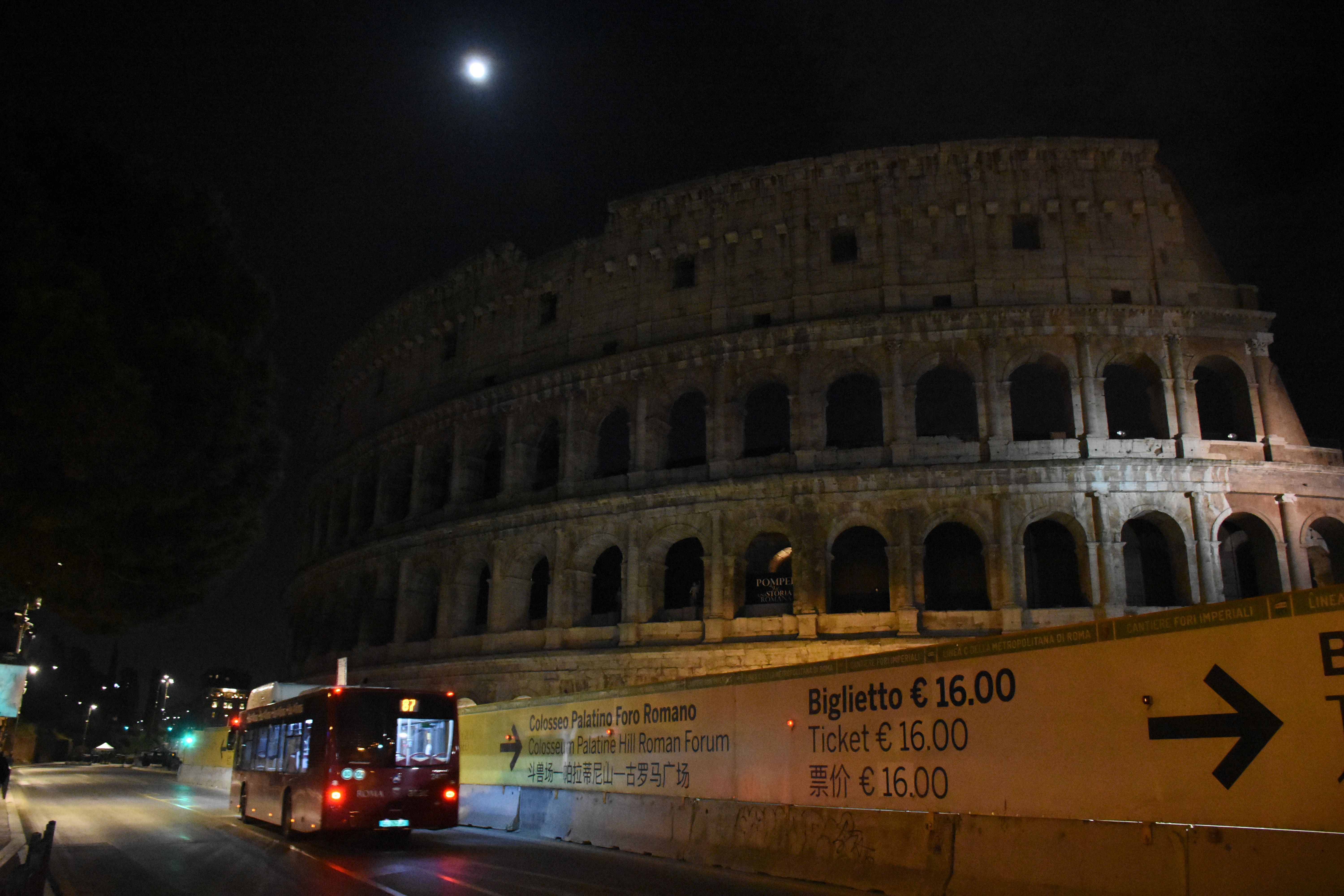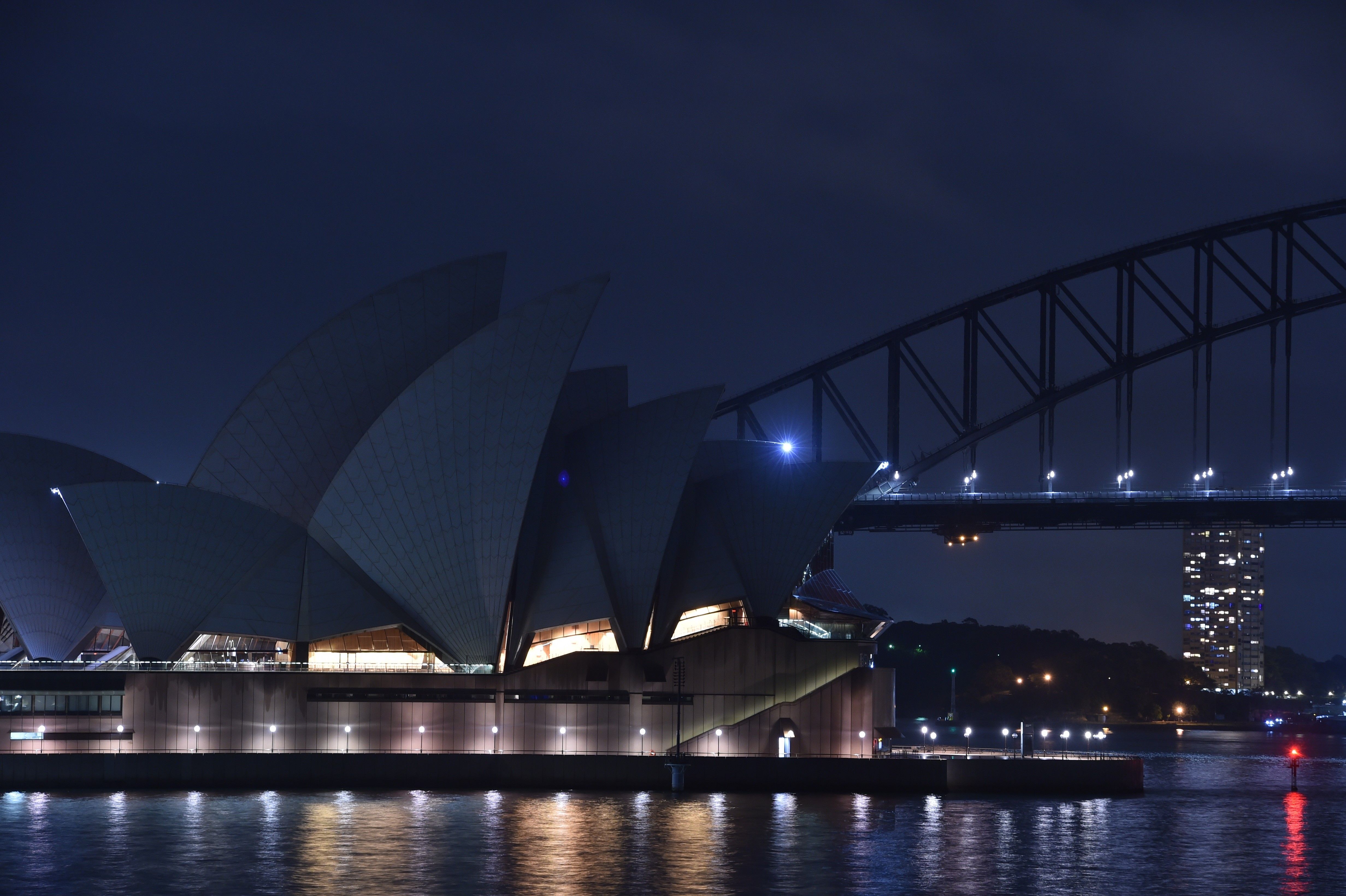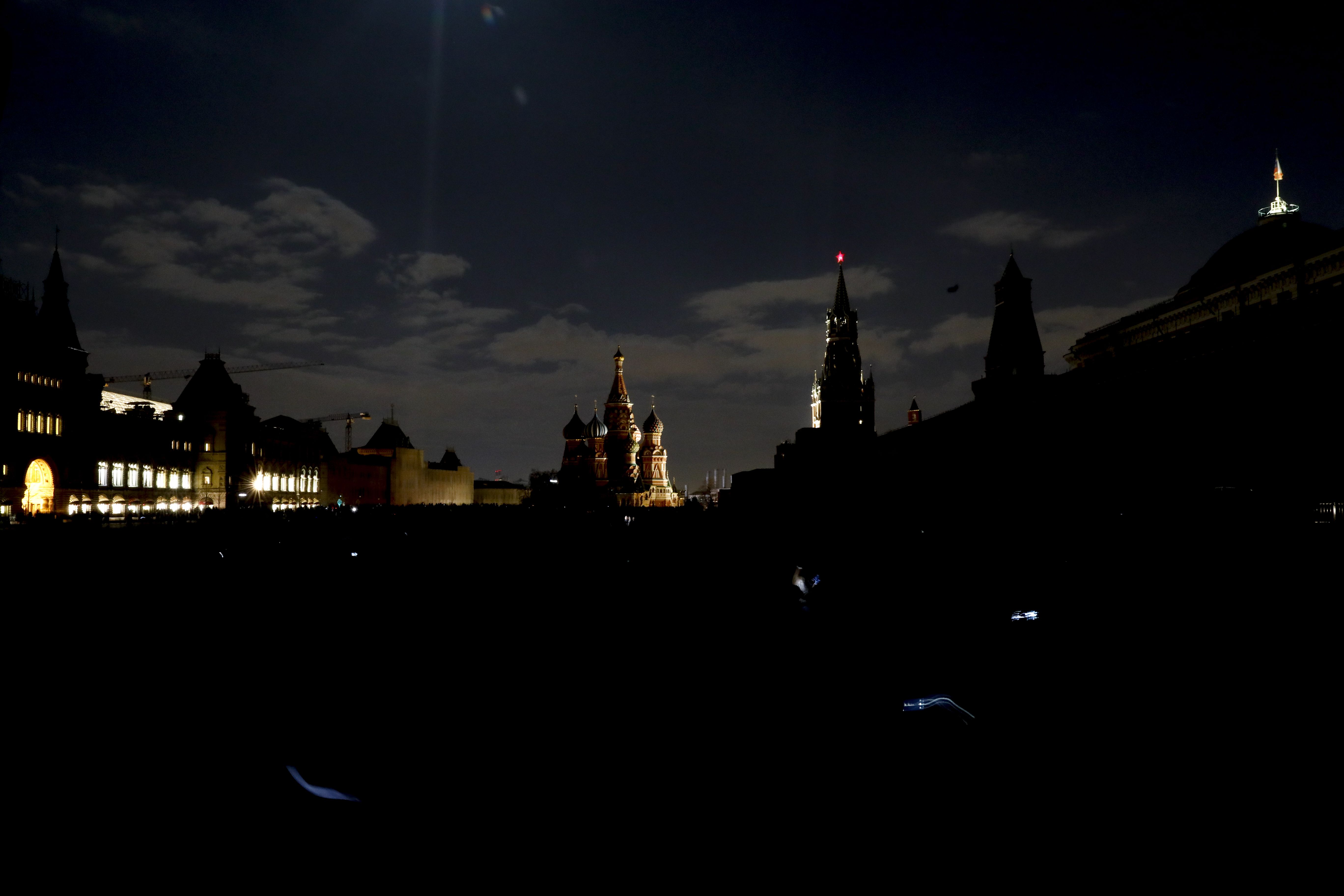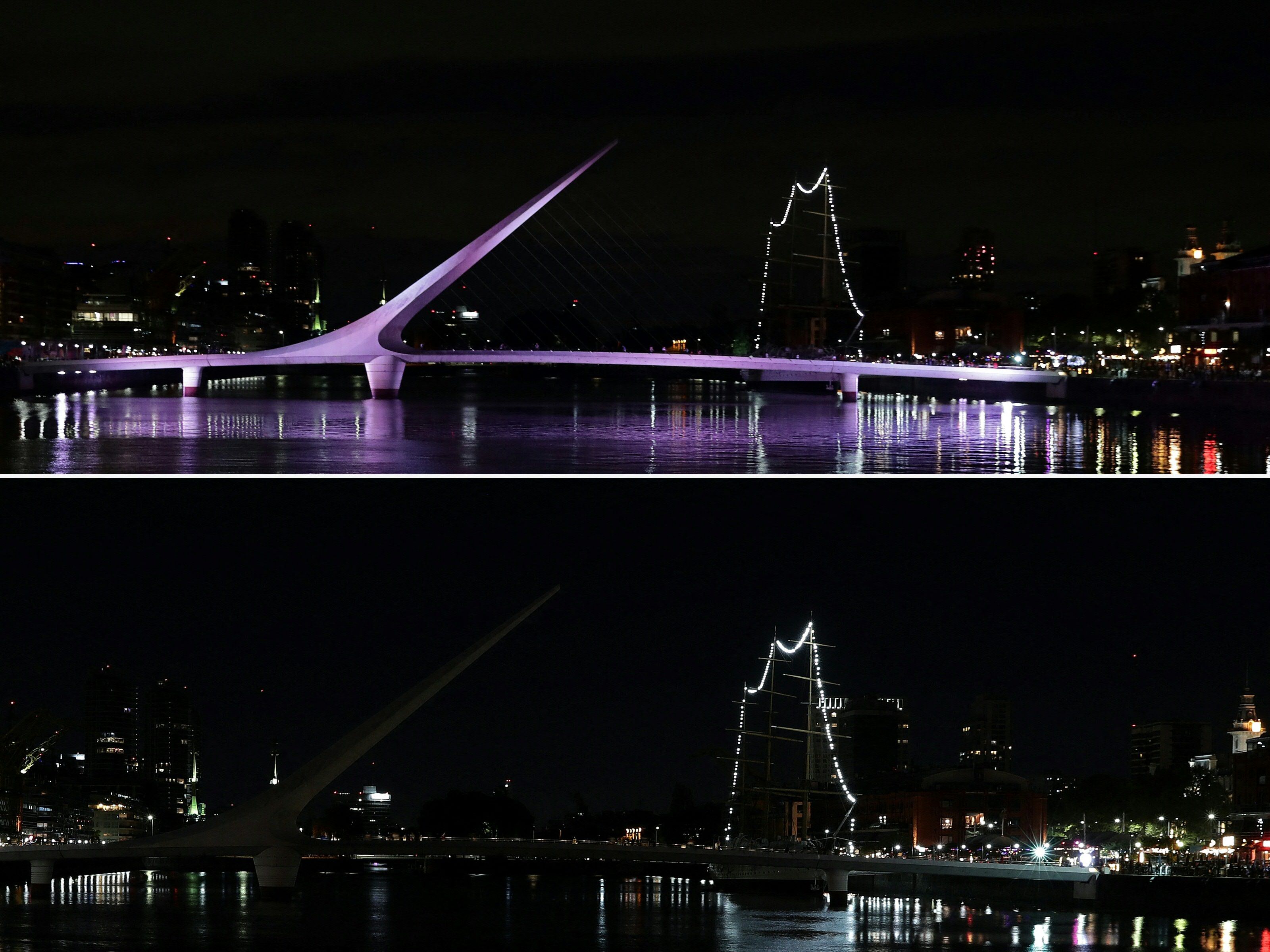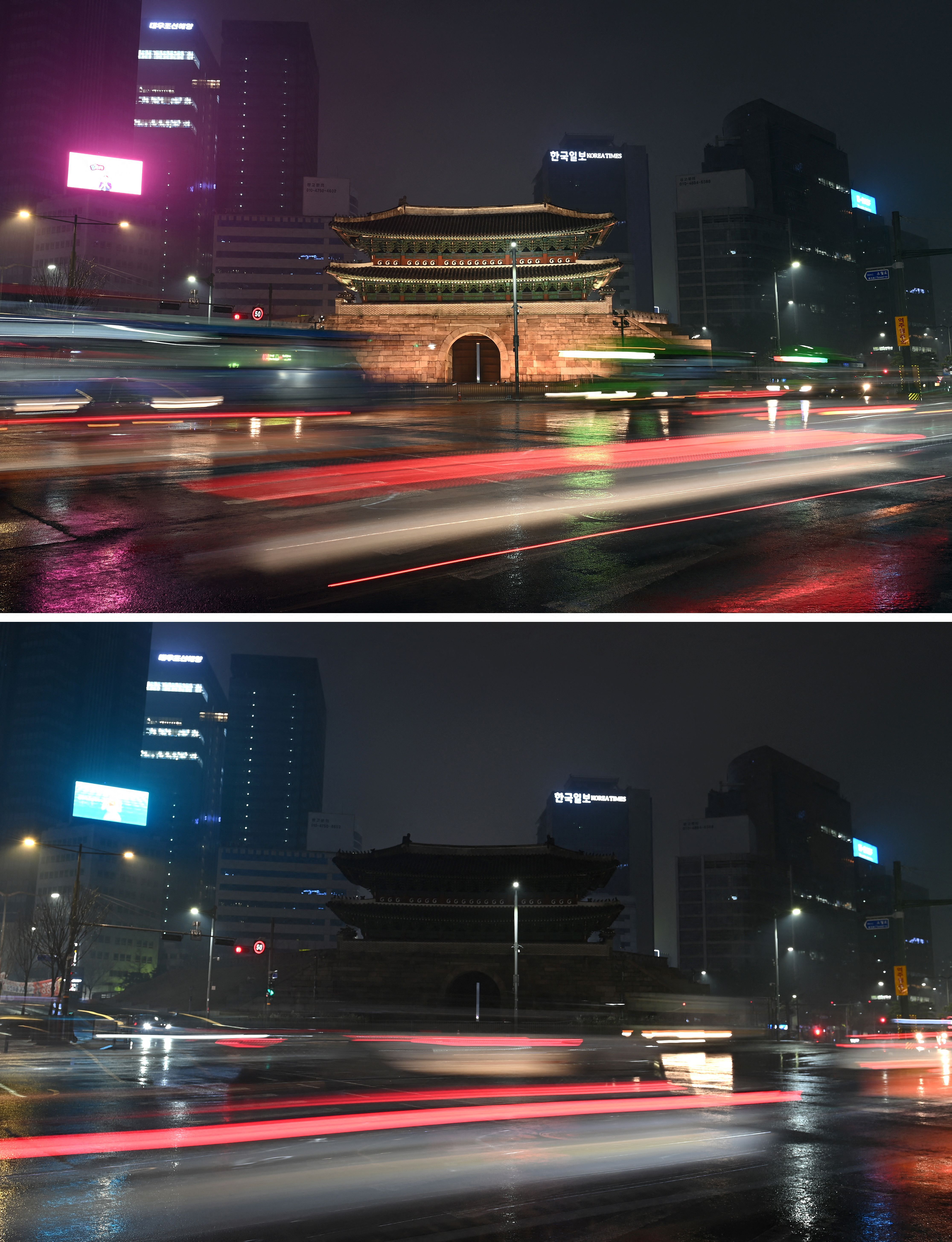Proboscis monkeys (Nasalis larvatus) are only found on Borneo (Credit: dbimages/Alamy)
The monkey with the enormous hooter
Proboscis
monkeys are aptly-named. Their big noses look ridiculous to human eyes,
but other proboscis monkeys may think otherwise. It's been suggested
that having a big nose might help a male to attract females, much as a
peacock's colourful tail does.
Having a big nose may also allow a male to make louder honks, warning off rivals.
Beyond their whopping noses, proboscis monkeys have another distinction. They may be the only primate species that chews the cud, regurgitating food for a second chew just like a cow.
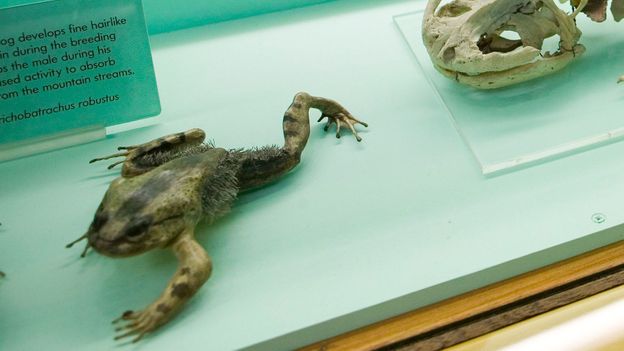
Hairy frog (Trichobatrachus robustus) specimen (Credit: The Natural History Museum/Alamy)
The improvised claws of the hairy frog
Hailing from Cameroon, the hairy frog has a secret weapon. Its back feet have extendable claws, a bit like those of a cat.
But
these claws don't work like those of your domestic moggy. They are made
of bone and are part of the frog's toes. When it feels threatened, it breaks the bones and pushes the claws out through its skin.
In fact the frog is more similar to Wolverine from the X-Men, if Wolverine could extend his adamantium claws from his feet.
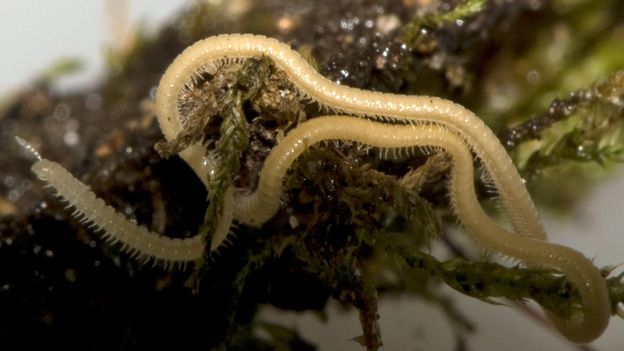
An Illacme plenipes with 618 legs (Credit: Daniel Mietchen, CC by 3.0)
The leggiest animal of all
Despite their name, no millipede has 1000 legs. The species that comes closest is Illacme plenipes, which has more legs than any other known animal.
Females of the species can have up to 750 legs. Nobody knows why: it might be that I. plenipes has evolved a really long gut to get the most out of its food, and the legs are simply a by-product.
It
is only found in a 4.5 sq km area of California, the precise location
of which has been kept secret for the animals' protection.
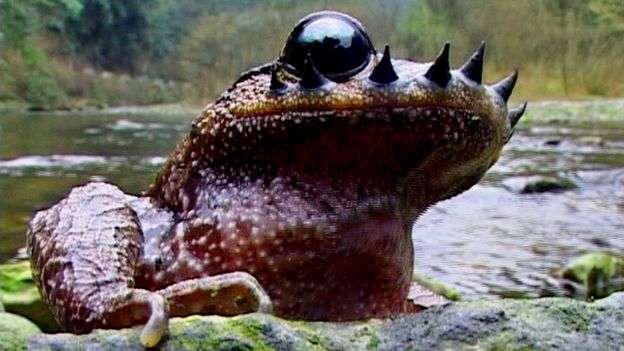
China is home to the moustached hipster toad (credit: Chinafotopress/Getty)
Toads have moustaches
Each male Emei moustache toad has a sharpened moustache, which it uses to fight other moustachioed males for territory.
The moustaches aren't made of hair, which amphibians don't have, but from solid spines growing out of the toad's upper lip. Each toad attempts to ram its moustache into its opponent's belly, puncturing it.
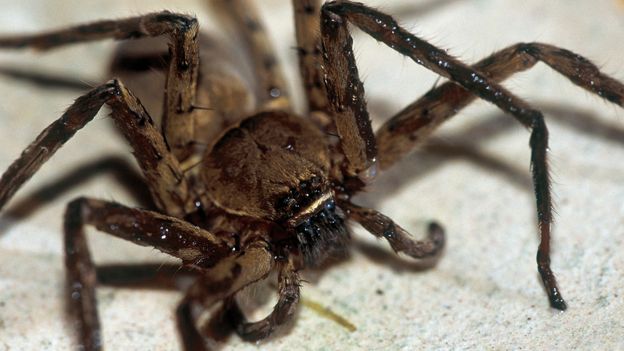
The huntsman spider has a white moustache (credit: Louise/Murray/SPL)
And so do spiders
The brown huntsman spider also grows impressive facial fluff.
It's not just for show: this spider uses its moustache to hunt. The white hairs stand out in the dark of night and help it attract prey.
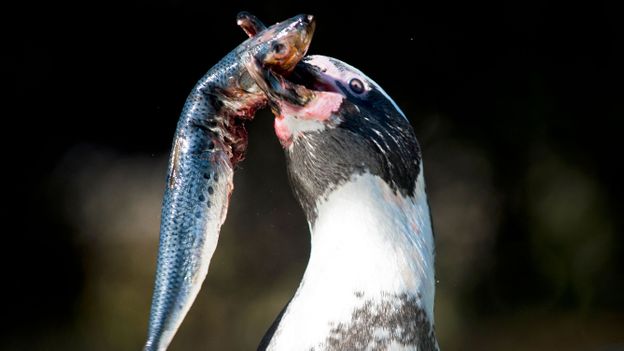
Tasty? or not (credit: Martin Bernetti/AFP/Getty)
Penguins cannot taste fish
More bad news for penguins. Despite fish being their main source of food, research shows they cannot actually taste it.
A study published in February 2015 discovered that they have lost the ability to taste fish. They only have the genes to make receptors for sour and salty food.
Apparently, because penguins tend to swallow fish whole, it doesn't really matter whether they can taste it or not.
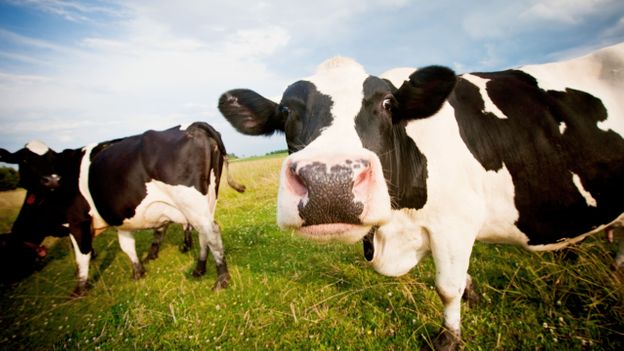
Some cows get high (credit: Christina Gandolfo/Alamy)
Crazy cows like weed
Cows are partial to drugs. In the US and Mexico, they eat locoweeds: poisonous plants in the genera Astragalus and Oxytropis that grow in their fields.
They
become lonesome, start walking funny, and bump into things. Eventually,
they get so high they will take huge leaps over the smallest obstacles,
such as a stick.
Well, there you have it! Cows under the influence of weed, I have heard it all!
The blog song for today is: "Amsterdam" by Al Stewart
TTFN


